- Home
- Maurice Druon
The She-Wolf
The She-Wolf Read online
‘History is a novel that has been lived’
E. & J. DE GONCOURT
‘It is terrifying to think how much research is needed to determine the truth of even the most unimportant fact’
STENDHAL
‘She-wolf of France, with unrelenting fangs, That tear’st the bowels of thy mangled mate …’
THOMAS GRAY
Contents
Cover
Title Page
Epigraph
Foreword
The Characters in this Book
Family Tree
The She-Wolf of France
Prologue
Part One: From the Thames to the Garonne
1. ‘No One ever Escapes from the Tower of London’
2. The Harassed Queen
3. Messer Tolomei has a New Customer
4. The False Crusade
5. A Time of Waiting
6. The Bombards
Part Two: Isabella in Love
1. Dinner with Pope John
2. The Holy Father’s Penance
3. The Road to Paris
4. King Charles
5. The Cross of Blood
6. The Happy Year of 1325
7. Each Prince who Dies …
Part Three: The Disinherited King
1. The Hostile Spouses
2. The Return to Neauphle
3. The Queen in the Temple
4. The Council at Chaâlis
Part Four: The Cruel Invasion
1. Harwich
2. The Shining Hour
3. Hereford
4. Vox Populi
5. Kenilworth
6. The Camp-kettle War
7. The Grass Crown
8. ‘Bonum Est’
9. The Red-hot Poker
Historical Notes
Footnotes
A Note for English Readers
Author’s Acknowledgements
By Maurice Druon
Copyright
About the Publisher
Foreword
GEORGE R.R. MARTIN
Over the years, more than one reviewer has described my fantasy series, A Song of Ice and Fire, as historical fiction about history that never happened, flavoured with a dash of sorcery and spiced with dragons. I take that as a compliment. I have always regarded historical fiction and fantasy as sisters under the skin, two genres separated at birth. My own series draws on both traditions … and while I undoubtedly drew much of my inspiration from Tolkien, Vance, Howard, and the other fantasists who came before me, A Game of Thrones and its sequels were also influenced by the works of great historical novelists like Thomas B. Costain, Mika Waltari, Howard Pyle … and Maurice Druon, the amazing French writer who gave us the The Accursed Kings, seven splendid novels that chronicle the downfall of the Capetian kings and the beginnings of the Hundred Years War.
Druon’s novels have not been easy to find, especially in English translation (and the seventh and final volume was never translated into English at all). The series has twice been made into a television series in France, and both versions are available on DVD … but only in French, undubbed, and without English subtitles. Very frustrating for English-speaking Druon fans like me.
The Accursed Kings has it all. Iron kings and strangled queens, battles and betrayals, lies and lust, deception, family rivalries, the curse of the Templars, babies switched at birth, she-wolves, sin, and swords, the doom of a great dynasty … and all of it (well, most of it) straight from the pages of history. And believe me, the Starks and the Lannisters have nothing on the Capets and Plantagenets.
Whether you’re a history buff or a fantasy fan, Druon’s epic will keep you turning pages. This was the original game of thrones. If you like A Song of Ice and Fire, you will love The Accursed Kings.
George R.R. Martin
The Characters in this Book
THE KING OF FRANCE:
CHARLES IV, called the Fair, fourteenth successor to Hugues Capet, great-grandson of Saint Louis, third and last son of Philip IV, the Fair, and Jeanne of Navarre, formerly husband of Blanche of Burgundy and Count de la Marche, aged 29.
THE QUEENS OF FRANCE:
MARIE OF LUXEMBURG, eldest daughter of Henry VII, Emperor of Germany, and of Marguerite of Brabant, aged 19.
JEANNE OF ÉVREUX, daughter of Louis of France, Count of Évreux, brother of Philip the Fair, and of Marguerite of Artois, aged about 18.
THE QUEEN DOWAGERS OF FRANCE:
CLÉMENCE OF HUNGARY, Princess of Anjou-Sicily, niece of King Robert of Naples, second wife and widow of King Louis X Hutin, aged 30.
JEANNE OF BURGUNDY, widow of King Philippe V, the Long, daughter of Count Othon of Burgundy and of Countess Mahaut of Artois, aged 30.
THE KING OF ENGLAND:
EDWARD II Plantagenet, ninth successor to William the Conqueror, son of Edward I and of Eleanor of Castille, aged 39.
THE QUEEN OF ENGLAND:
ISABELLA OF FRANCE, wife of the above, daughter of Philip the Fair and sister of the King of France, aged 31.
THE HEIR TO THE THRONE OF ENGLAND:
EDWARD, eldest son of the above and future King Edward III, aged II.
THE HOUSE OF VALOIS:
MONSEIGNEUR CHARLES, grandson of Saint Louis and brother of Philip the Fair, uncle of the King of France, Count of the Appanage of Valois, of Maine, of Anjou, of Alençon, of Chartres and of Perche, Peer of the Kingdom, ex-Titular Emperor of Constantinople, Count of Romagna, aged 53.
MONSEIGNEUR PHILIPPE, Count of VALOIS and of Maine, eldest son of Charles of Valois and of his first wife Marguerite of Anjou-Sicily, future King Philippe VI, aged 30.
JEANNE OF VALOIS, Countess of HAINAUT, daughter of Charles of Valois and of Marguerite of Anjou, sister of the above, wife of Count Guillaume of Hainaut, aged 27.
JEANNE OF VALOIS, Countess of BEAUMONT, daughter of Charles of Valois and his second wife Catherine de Courtenay, half-sister of the above, wife of Robert III of Artois, Count of Beaumont, aged about 19.
MAHAUT DE CHTILLON-SAINT-POL, Countess of Valois, third wife of Monseigneur Charles.
JEANNE, called THE LAME, Countess of VALOIS, daughter of the Duke of Burgundy and Agnes of France, sister of Marguerite of Burgundy, granddaughter of Saint Louis, wife of Monseigneur Philippe, aged 28.
THE HOUSE OF NAVARRE:
JEANNE OF NAVARRE, daughter of Louis X Hutin and of Marguerite of Burgundy, heir to the Kingdom of Navarre, aged 12.
PHILIPPE OF FRANCE, Count of ÉVREUX, husband of the above, son of Louis of France, Count of Évreux, and cousin-german of Charles the Fair, future King of Navarre, aged about 15.
THE HOUSE OF ARTOIS:
THE COUNTESS MAHAUT OF ARTOIS, Peer of the Kingdom, widow of the Count Palatine Othon IV of Burgundy, mother of Jeanne and Blanche of Burgundy, aged about 54.
ROBERT III OF ARTOIS, nephew and adversary of the above, Count of Beaumont-le-Roger, Lord of Conches, son-in-law of Charles of Valois, aged 36.
THIERRY LARCHER D’HIRSON, Canon, Chancellor to the Countess Mahaut, aged 53.
BÉATRICE D’HIRSON, niece of the above, lady-in-waiting to the Countess Mahaut, aged about 29.
THE HOUSE OF HAINAUT:
JEAN OF HAINAUT, brother of Guillaume the Good, Count of Hainaut, Holland and Zeeland.
PHILIPPA OF HAINAUT, his niece, second daughter of Guillaume the Good and of Jeanne of Valois, affianced to Prince Edward of England, aged 9.
THE GREAT OFFICERS OF THE CROWN OF FRANCE:
LOUIS OF CLERMONT, Lord, then first Duke, of BOURBON, grandson of Saint Louis, Great Chamberlain of France.
GAUCHER DE CHTILLON, Lord of Crèvecoeur, Count of Porcien, Constable of France since 1302.
JEAN DE CHERCHEMONT, Chancellor.
HUGUES DE BOUVILLE, o
ne-time Great Chamberlain to Philip IV, the Fair, Ambassador.
THE RELATIONS OF THE KING OF ENGLAND:
THOMAS DE BROTHERTON, Earl of Norfolk, Marshal of England, son of Edward I of England and of his second wife Margaret of France, half-brother to King Edward II and cousin to the King of France, aged 23.
EDMUND, Earl of KENT, younger brother of the above, Governor of Dover, Warden of the Cinque Ports, aged 22.
HENRY, Earl of LEICESTER and LANCASTER, called Crouchback, grandson of Henry III of England, cousin-german to King Edward II, aged 42.
THE COUNCILLORS:
HUGH DESPENSER, the elder, Earl of Winchester, aged 61.
HUGH DESPENSER, the younger, son of the above, Earl of Gloucester, the favourite of King Edward II, aged 33.
BALDOCK, Archdeacon, Chancellor to Edward II.
WALTER STAPLEDON, Bishop of Exeter, Lord Treasurer.
The Earls of ARUNDEL and WARENNE.
THE LADIES-IN-WAITING TO QUEEN ISABELLA:
LADY JEANNE MORTIMER, née Joinville, great-niece of the Seneschal de Joinville, the wife of Roger Mortimer, Baron of Wigmore, aged 37.
LADY ALIENOR DESPENSER, née Clare, the wife of Hugh Despenser, the younger.
THE BARONS OF THE OPPOSITION:
ROGER MORTIMER, the elder, Lord of CHIRK, one-time Justiciar of Wales, aged 67.
ROGER MORTIMER, the younger, eighth Baron of WIGMORE, the King’s former Lord-Lieutenant and Justiciar of Ireland, nephew of the above, aged 36.
JOHN MALTRAVERS, THOMAS DE BERKELEY, THOMAS GOURNAY, JOHN DE CROMWELL, etc., English lords.
THE ENGLISH BISHOPS:
ADAM ORLETON, Bishop of Hereford.
WALTER REYNOLDS, Archbishop of Canterbury.
JOHN DE STRATFORD, Bishop of Winchester.
THE GUARDIANS OF THE TOWER OF LONDON:
STEPHEN SEAGRAVE, Constable.
GERARD DE ALSPAYE, Lieutenant.
OGLE, Barber.
THE COURT OF AVIGNON:
POPE JOHN XXII, ex-Cardinal Jacques DUÈZE, elected at the Conclave of 1316, aged 79.
BERTRAND DU POUGET, GAUCELIN DUÈZE, GAILLARD DE LA MOTHE, ARNAUD DE VIA, RAYMOND LE ROUX, Cardinals and relations of the Pope.
JACQUES FOURNIER, Counsellor to John XXII, future Pope Benedict XII.
THE LOMBARDS:
SPINELLO TOLOMEI, a Sienese banker in business in Paris, aged about 69.
GUCCIO BAGLIONI, his nephew, a Sienese banker of the Tolomei Company.
BOCCACCIO, a traveller for the Bardi Company, father of the poet.
THE CRESSAY FAMILY:
PIERRE AND JEAN DE CRESSAY, sons of the late Lord of Cressay, aged about 31 and 29.
MARIE, their sister, secret wife to Guccio Baglioni, aged 25.
JEAN, called Jeannot or Giannino, supposed son of Guccio Baglioni and of Marie de Cressay, in fact JEAN THE POSTHUMOUS, son of Louis X Hutin and of Clémence of Hungary, aged 7.
All the above names have their place in history; their ages are given as in the year 1323.
The She-Wolf of France
‘I SEE,’ SAID ISABELLA, ‘that you wish me to be left utterly alone.’
‘What do you mean by alone, Madame?’ cried Hugh the Younger in his fine, well-modulated voice. ‘Are we not all your loyal friends, being the King’s? And is not Madame Alienor, my devoted wife, a faithful companion to you? ‘That’s a pretty book you have there,’ he added, pointing to the volume, ‘and beautifully illuminated; would you be kind enough to lend it to me?’
‘Of course, of course the Queen will lend it to you,’ the King said. ‘I am sure, Madame, that you will do us the pleasure of lending the book to our friend Gloucester?’
‘Most willingly, Sire my husband, most willingly. And I know what lending means when it’s to your friend, Lord Despenser. I lent him my pearls ten years ago and, as you can see, he’s still wearing them about his neck.’
She would not surrender, but her heart was beating wildly in her breast. From now on she would have to bear the daily insults all alone. If, one day, she found means of revenging herself, nothing would be forgotten.
Prologue
THE CHASTISEMENTS PROPHESIED by the Grand Master of the Templars and the curses he had hurled from amid the faggots of his pyre continued to fall on France. Fate had destroyed her kings like pieces on a chess-board.
Philip the Fair having died as if struck down by lightning, and his eldest son, Louis X, having been murdered after eighteen months on the throne, Philippe V, his second son, seemed destined for a long reign. But now six years had gone by, and Philippe V had died in his turn before attaining the age of thirty.
Let us look for a moment at his reign which, compared with the tragedies and disasters that were to follow, seems something of a respite from calamity. If you glance casually through a history of the period, it may seem a colourless reign, possibly because your hand comes away from the page unstained with blood. And yet, if we look deeper, we shall see of what a great king’s days consist if Fate is against him.
For Philippe V, the Long, had been a great king. By a mixture of force and cunning, of legality and crime, he had seized the crown, when it was at auction to the ambitious, while still a young man. An imprisoned conclave, a royal palace taken by assault, an invented law of succession, a provincial revolt put down in a ten days’ campaign, a great lord cast into prison and a royal child murdered in its cradle – or so at least it was supposed – had all been stages on his rapid path to the throne.
On that January morning in 1317, when, as the bells rang out in the heavens, the second son of the Iron King had come out of Rheims Cathedral, he had reason to believe that he had triumphed, and was now free to pursue his father’s grand policies, which he had so much admired. His family had all had to bow to his will. The barons were checkmated; Parliament had submitted to his ascendancy, and the middle classes had acclaimed him, delighted to have a strong Prince again; his wife had been washed clean of the stain of the Tour de Nesle; his succession seemed assured by the son who had recently been born to him; and, finally, coronation had endued him with intangible majesty. There seemed to be nothing lacking to Philippe V’s enjoyment of the relative happiness of kings, not least the wisdom to desire peace and recognize its worth.
Three weeks later his son died. It was his only male child, and Queen Jeanne, barren from henceforth, would give him no more.
At the beginning of summer the country was ravaged by famine and the towns were strewn with corpses.
And then, soon afterwards, a wave of madness broke over the whole of France.
Driven by blind and vaguely mystical impulses, primitive dreams of sanctity and adventure, by their condition of poverty and by a sudden frenzy for destruction, country boys and girls, sheep-, cow- and swineherds, young artisans, young spinners and weavers, nearly all of them between fifteen and twenty, abruptly left their families and villages, and formed barefoot, errant bands, provided with neither food nor money. Some wild idea of a crusade was the pretext for the exodus.
Indeed, madness had been born amid the wreckage of the Temple. Many of the ex-Templars had gone half-crazy through imprisonment, persecution, torture, disavowals torn from them by hot irons, and by the spectacle of their brothers delivered to the flames. A longing for vengeance, nostalgia for lost power, and the possession and knowledge of certain magic practices learnt in the East had turned them into fanatics, who were all the more dangerous because they disguised themselves in a cleric’s humble robe or in a workman’s smock. They had re-formed themselves into a secret society; and they obeyed the mysteriously transmitted orders of a clandestine Grand Master, who had replaced the Grand Master burnt at the stake.
It was these men who had suddenly transformed themselves one winter into village preachers and, like the Pied Piper of the Rhine legends, had led away the youth of France: to the Holy Land, they said. But their real goal was to wreck the kingdom and ruin the papacy.
And Pope and King were equally powerless in the face
of these visionary hordes travelling the roads, these human rivers swelling at every cross-roads as if the lands of Flanders, Normandy, Brittany and Poitou were bewitched.
In their thousands, their twenty thousands, their hundred thousands, the pastoureaux were marching towards mysterious goals. Unfrocked priests, apostate monks, brigands, thieves, beggars and whores, all joined their bands. At the head of these columns a cross was carried, while the girls and boys indulged in the utmost licence, committed the worst excesses. A hundred thousand ragged marchers, entering a town to beg, soon pillaged it. And felony, which was at first merely an accessory to theft, soon became the satisfaction of a vice.
The pastoureaux ravaged France for a whole year and, indeed, with a certain method in their madness. They spared neither churches nor monasteries. Paris, aghast, saw an army of plunderers invade its streets, and King Philippe V spoke pacifically to them from a window of his palace. They urged the King to place himself at their head. They took the Châtelet by assault, attacked the Provost, and pillaged the Abbey of Saint-Germain-des-Prés. Then new orders, mysterious as those assembling them, directed them on to the roads to the south. The people of Paris were still trembling with fear when the pastoureaux were already flooding into Orléans. The Holy Land was far away; Bourges, Limoges, Saintes, the Périgord and the Bordelais, Gascony and Agenais had to suffer their fury.
Pope John XXII grew alarmed as the flood approached Avignon and he threatened these false crusaders with excommunication. But they had need of victims, and they found the Jews. From then on, the urban populations applauded the massacres and fraternized with the pastoureaux. Amid the ghettoes of Lectoure, Auvillar, Castelsarrasin, Albi, Auch and Toulouse were to be seen here a hundred and fifteen corpses, and there a hundred and fifty-two. There was not a city in Languedoc that did not suffer this expiatory butchery. The Jews of Verdun-sur-Garonne used their children as missiles, and then cut each others’ throats so as not to fall into the hands of the lunatics.
Then the Pope ordered his bishops and the King his seneschals to protect the Jews, whose commerce was important to them. The Count of Foix, going to the help of the Seneschal of Carcassonne, had to fight a pitched battle with the pastoureaux and drove them back into the marches of Aigues-Mortes, where they died in their thousands, stabbed, bludgeoned, engulfed or drowned. The land of France was quaffing its own blood, devouring its own youth. In the end, the clergy and the officers of the crown joined in hunting down the survivors. The gates of the towns were closed to them; they were denied food and lodging; they were pursued into the passes of the Cévennes. Those captured were hanged in groups of twenty or thirty to the branches of trees. For most of the next two years there were still some bands wandering about; and they ranged as far as Italy before they finally disappeared.

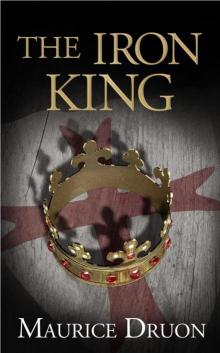 The Iron King
The Iron King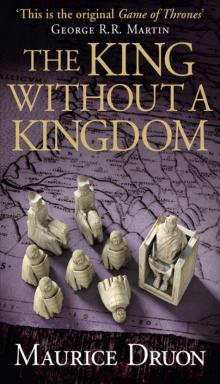 The King Without a Kingdom
The King Without a Kingdom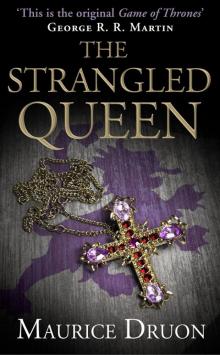 The Accursed Kings Series Books 1-3: The Iron King, the Strangled Queen, the Poisoned Crown
The Accursed Kings Series Books 1-3: The Iron King, the Strangled Queen, the Poisoned Crown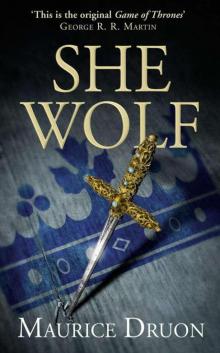 The She-Wolf
The She-Wolf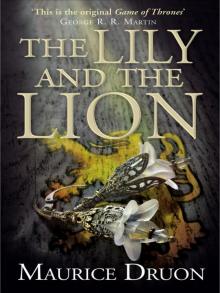 The Lily and the Lion
The Lily and the Lion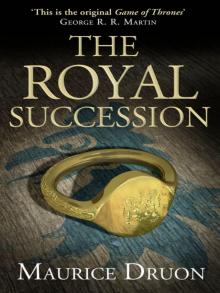 The Royal Succession
The Royal Succession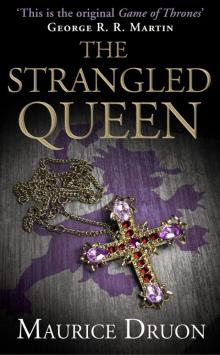 The Strangled Queen
The Strangled Queen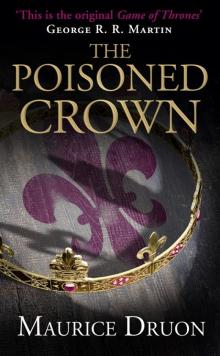 The Poisoned Crown
The Poisoned Crown